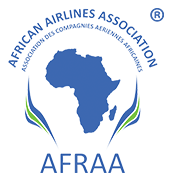Five years of Pratt & Whitney GTF™ Engines in China Saving 95 Million Gallons of Fuel
Zhuhai, China, Sept. 28, 2021 – Pratt & Whitney today announced that its GTF engines have now saved Chinese operators more than 95 million gallons (nearly 360 million liters) of fuel and avoided more than 910,000 metric tonnes of carbon emissions, accumulating over 400,000 flights and over 1.73 million hours of experience in China. The engines power 11 airlines across the region on nearly 200 Airbus A320neo family aircraft, which have carried an estimated 57 million passengers since entry into service nearly five years ago. Furthermore, Chinese operators are benefiting from a mature dispatch reliability rate of 99.97% globally.
“The GTF engine family is delivering market-leading economic and environmental benefits today that will continue to grow in the decades to come,” said Yogesh Farswani, president, China at Pratt & Whitney. “To deliver the most sustainable and smart engine possible, we did the hard work first by introducing the gear. This bold move and the proven technologies behind it are offering unmatched efficiency, world-class operating costs and high aircraft utilization. With the geared fan mastered, we have the right foundation for future innovations, keeping the GTF at the forefront of sustainable propulsion.”
The unique geared fan architecture of the GTF engine is core to Pratt & Whitney’s strategy to develop more sustainable propulsion systems, which will further industry efforts to reach its ambitious environmental goals in the coming decades. This architecture lets Pratt & Whitney maximize benefits of more advanced aerodynamics, materials and systems, and the company sees considerable potential to continue lowering fuel burn, carbon emissions and noise. The company has also been making investments throughout its portfolio of EngineWise® solutions, from comprehensive and flexible service offerings to predictive analytics, on-wing services, and more – with the objective to deliver dependability, world-class operating costs, a modern customer experience and contribute to a more sustainable industry.
Since entering service in early 2016, the GTF engine family has delivered on its promised ability to reduce fuel burn and carbon emissions by up to 20 percent, noise footprint by 75 precent and regulated emissions by 50 percent to the CAEP/6 regulatory standard. The engine’s unique geared fan is the right architecture for the future with a long runway for further development. Pratt & Whitney is committed to continuing to invest in evolving propulsion systems to power the next generation of commercial aircraft.
About Pratt & Whitney
Pratt & Whitney is a world leader in the design, manufacture and service of aircraft and helicopter engines, and auxiliary power units. To learn more visit its www.prattwhitney.com.
